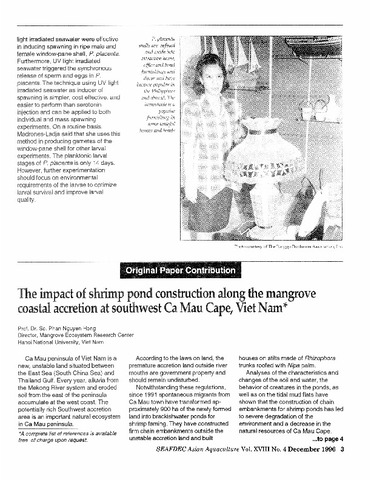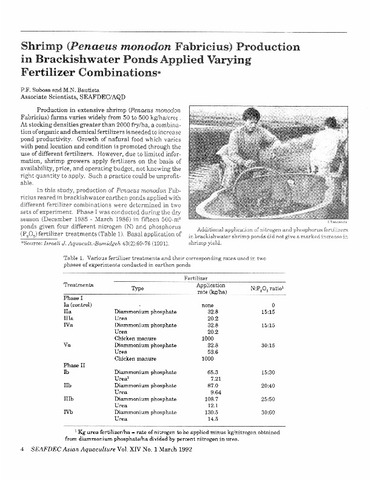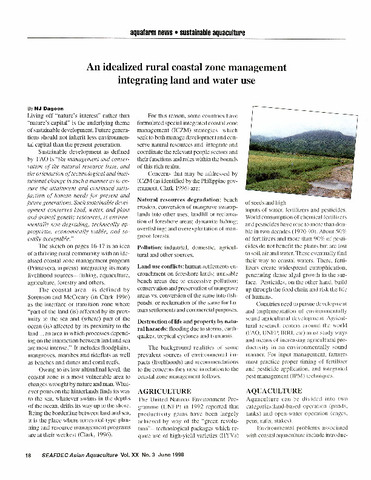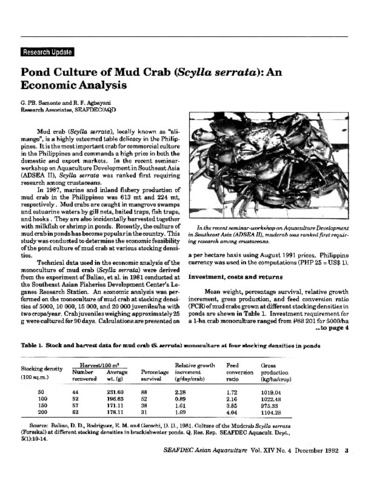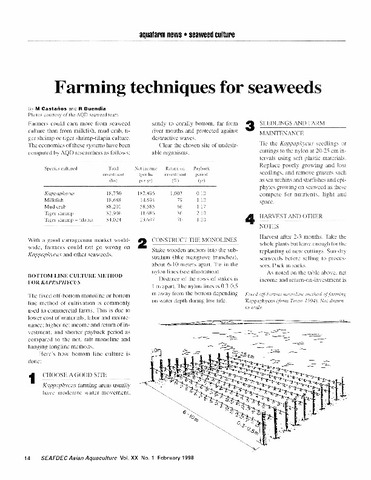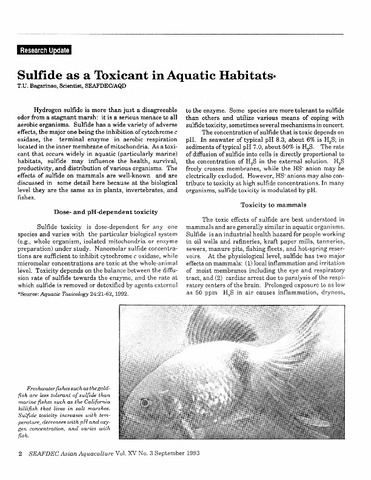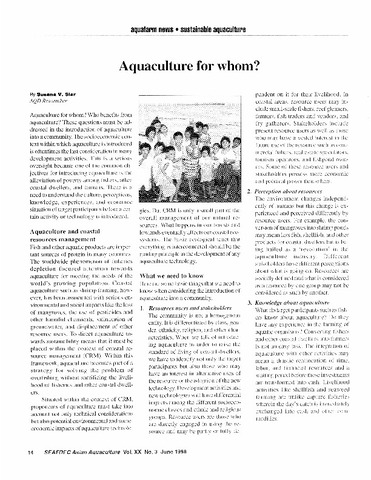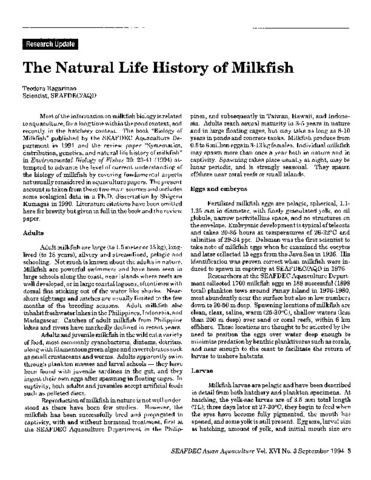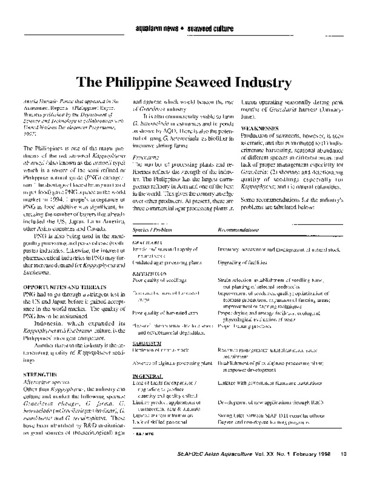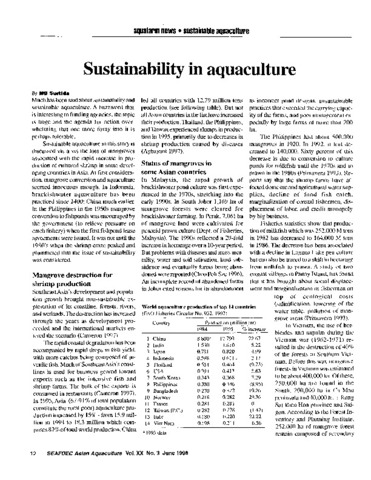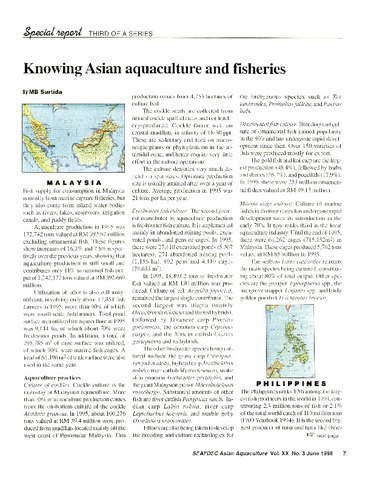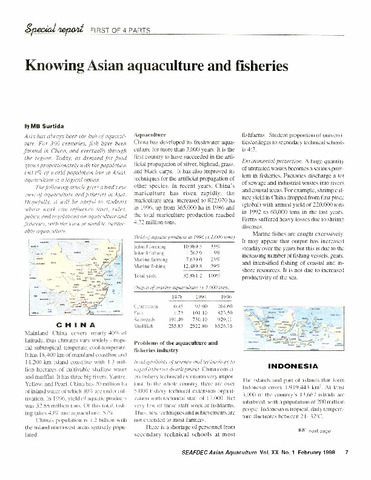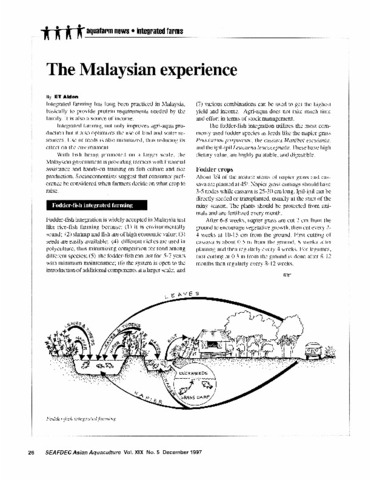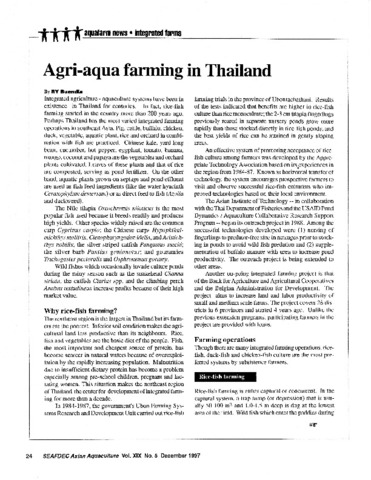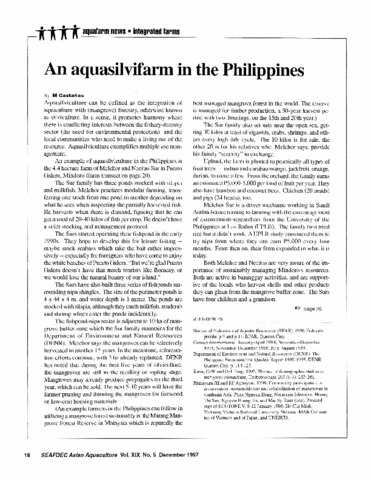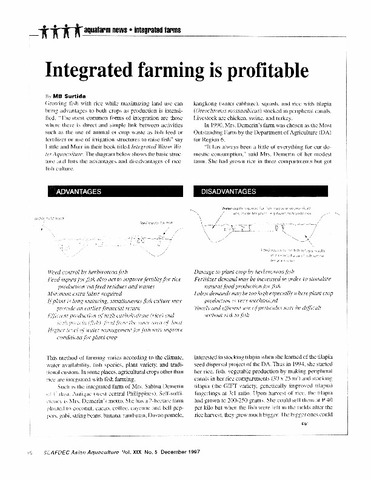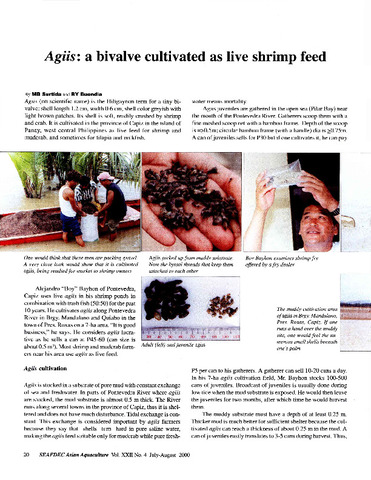SEAFDEC Asian Aquaculture: Recent submissions
221-240 / 305
-
The impact of shrimp pond construction along the mangrove coastal accretion at southwest Ca Mau Cape, Viet Nam
(Aquaculture Department, Southeast Asian Fisheries Development Center, 1996) -
Shrimp (Penaeus monodon Fabricius) production in brackishwater ponds applied varying fertilizer combinations
(Aquaculture Department, Southeast Asian Fisheries Development Center, 1992)Details are given of the production of Penaeus monodon in the Philippines reared in brackishwater earthen ponds applied with different fertilizer combinations, namely diammonium phosphate, urea and chicken manure. Results ... -
An idealized rural coastal zone management integrating land and water use
(Aquaculture Department, Southeast Asian Fisheries Development Center, 1998)Various countries have formulated special integrated coastal zone management (ICZM) strategies which seek to both manage development and conserve natural resources and integrate and coordinate the relevant people sectors ... -
Pond culture of mud crab (Scylla serrata): An economic analysis
(Aquaculture Department, Southeast Asian Fisheries Development Center, 1992)The findings are presented of a study conducted to determine the economic feasibility of the pond culture of mud crab (Scylla serrata) at various stocking densities. Investments, costs, and returns are given for a 1 ha ... -
Farming techniques for seaweeds
(Aquaculture Department, Southeast Asian Fisheries Development Center, 1998)Details are given of farming methods developed by the SEAFDEC Aquaculture Department for 3 different seaweeds: 1) Bottom line culture method for Kappaphycus; 2) Pond culture of Gracilaria; and, 3) Gracilariopsis bailinae, ... -
Sulfide as a toxicant in aquatic habitats
(Aquaculture Department, Southeast Asian Fisheries Development Center, 1993)The toxic effects of sulphide are best understood in mammals and are generally similar in aquatic organisms. At the physiological level sulphide has 2 major effects on mammals: 1) local inflammation and irritation of moist ... -
Aquaculture for whom?
(Aquaculture Department, Southeast Asian Fisheries Development Center, 1998)Aquaculture and coastal resources management is discussed, indicating the various factors which need to be taken into consideration when introducing aquaculture into a community: 1) Resources users and stakeholders; 2) ... -
The natural life history of milkfish
(Aquaculture Department, Southeast Asian Fisheries Development Center, 1994)Following brief descriptions of the various phases in the natural life history of the milkfish (Chanos chanos), namely adults, eggs and embryos, larvae, fry and metamorphosis, juveniles and sub-adults, a summary is provided ... -
The Philippine seaweed industry
(Aquaculture Department, Southeast Asian Fisheries Development Center, 1998)A brief outline is given of the Philippine seaweed industry, which involves mainly the red seaweed Kappaphycus alvarezii, produced as a source of the semi-refined or Philippine natural grade (PNG) carrageenan. Other species ... -
Technology for the community: SEAFDEC-designed artificial reefs
(Aquaculture Department, Southeast Asian Fisheries Development Center, 1995)An account is given of the fabrication and deployment of artificial reefs used in the SEAFDEC/AQD's Community Fishery Resource Management project, which focused on Malalison Island located in west Central Philippines. The ... -
Sustainability in aquaculture
(Aquaculture Department, Southeast Asian Fisheries Development Center, 1998)Sustainable aquaculture in Asia is discussed, considering in particular the loss of mangroves associated with the rapid increase in production of cultured shrimp. Southeast Asia's development and population growth brought ... -
Knowing Asian aquaculture and fisheries
(Aquaculture Department, Southeast Asian Fisheries Development Center, 1998-06)An outline is given of aquaculture practices in Malaysia, Philippines and Thailand, which included freshwater, brackishwater and marine systems. -
Mangrove destruction for shrimp rearing in Minh Hai, Viet Nam: its damage to natural resources and the environment
(Aquaculture Department, Southeast Asian Fisheries Development Center, 1996) -
Knowing Asian aquaculture and fisheries
(Aquaculture Department, Southeast Asian Fisheries Development Center, 1998-02)An outline is given of aquaculture and fisheries in Asia, providing information of use to students whose work can influence laws, rules, policy and regulations on aquaculture and fisheries, with the view in mind to sustainable ... -
Economic value of the milkfish industry
(Aquaculture Department, Southeast Asian Fisheries Development Center, 1998)A brief description is given of the milkfish (Chanos chanos) farming industry in the Philippines. Over the past 20 years, the relative importance of milkfish has declined with the expansion of tilapia, tiger shrimp and ... -
The Malaysian experience
(Aquaculture Department, Southeast Asian Fisheries Development Center, 1997)Integrated farming has long been practiced in Malaysia, not only to provide protein requirements needed by the family, but also as a source of income. With fish being promoted on a larger scale, the Malaysian government ... -
Agri-aqua farming in Thailand
(Aquaculture Department, Southeast Asian Fisheries Development Center, 1997)Integrated agriculture-aquaculture systems have been in existence in Thailand for centuries. This country has the most varied integrated farming operations in southeast Asia; pig, cattle, buffalo, chicken, duck, vegetable, ... -
An aquasilvifarm in the Philippines
(Aquaculture Department, Southeast Asian Fisheries Development Center, 1997)Aquasilviculture can be defined as the integration of aquaculture with mangroves. Details are given of an example of aquasilviculture in the Philippines at Puerto Galera, Mindoro. The farm has 3 series of perimeter ponds ... -
Integrated farming is profitable
(Aquaculture Department, Southeast Asian Fisheries Development Center, 1997)Growing fish with rice while maximizing land use can bring advantages to both crops as production is intensified. Details are given of the basic structure of rice field aquaculture, listing the major advantages and ... -
Agiis: a bivalve cultivated as live shrimp feed
(Aquaculture Department, Southeast Asian Fisheries Development Center, 2000)Live 'agiis' have been proven to be a good feed for shrimp for the past ten years by polyculture fish farmers in the province of Capiz, in the island of Panay, west central Philippines. A brief account is given of culture ...

